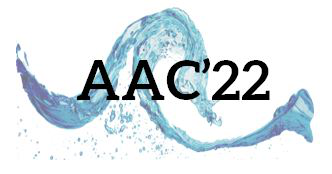Speaker
Description
A moderately high plasma density (>$10^{20}$ m$^{-3}$) with very high axial uniformity is needed to achieve wakefield acceleration of electrons in the GV/m range in AWAKE plasmas. While helicon plasmas are capable of reaching sufficient densities at the beginning of a 5 ms pulse, it is not known if they meet the strict uniformity requirement of 0.25% for use in AWAKE. Laser induced fluorescence (LIF) is a versatile diagnostic capable of measuring ion and neutral densities, flow velocities, and temperatures. Recent LIF measurements in the new Madison AWAKE Prototype (MAP) indicate the presence of the expected helicon mode propagating in the plasma. Having confirmed the presence of the helicon mode, particular attention is devoted to understanding the axial density profile and its formation, through an investigation of the particle balance derived with LIF. A new high speed LIF diagnostic is being developed to investigate the startup regime, which is known to reach higher densities than the equilibrium regime reaches. The new diagnostic opens the door for a startup regime particle balance, which will give insight into the physics of ion and neutral dynamics that establish the axial density profile. In particular, the plasma pressure gradient that could cause a depletion of neutral particles on axis could have a significant impact on the axial density profile especially in limiting the achievable density in a helicon.
Acknowledgments
This work is funded by the U.S. NSF under grant PHY-1903316.

